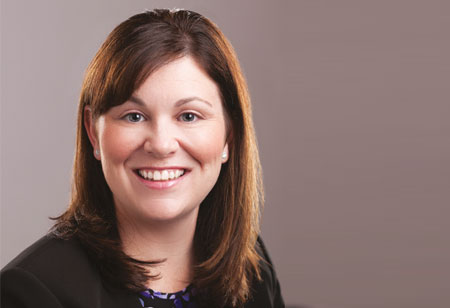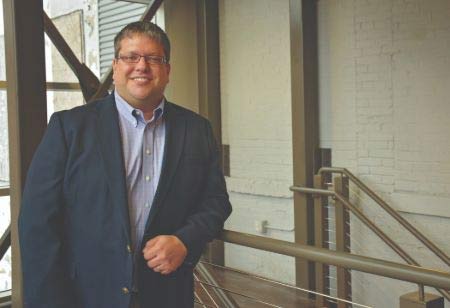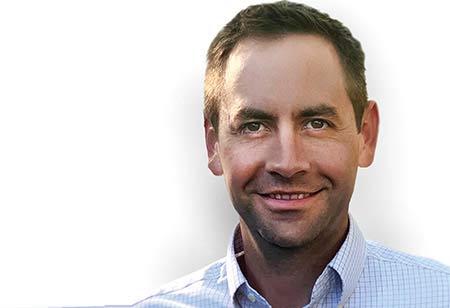THANK YOU FOR SUBSCRIBING

AI Powered Technology Streamlines Site Acquisition and Development
Nathan Stevens, Principal Professional, PG, Kleinfelder

 Nathan Stevens, Principal Professional, PG, Kleinfelder
Nathan Stevens, Principal Professional, PG, KleinfelderWhether you’re an investor, developer, or owner, the land acquisition and development business abound with challenges that can result in project schedule delays and costly spendingdue to unforeseen liabilities. Because environmental issues, in particular, can be extremely detrimental to site development, a project’s success depends on how well environmental risk is identified, analyzed, and managed from acquisition through construction. With advances in technology, assessing a property’s environmental risk is now more efficient and cost effective than ever.
AI Powered Technology Reduces Risk and Streamlines Site Assessment
When environmental scientists and engineers investigate a site for environmental risk, it requires many hours of analysis and days of field work on-site to collect hydrology, chemistry, and geology data to create a conceptual site model of potential contamination.These models can be quite expensive to develop, however they are extremely important because the costs of delays from unanticipated issues andpotential remedial actions and decisions by regulators hinge on understanding the extent, concentration, and spread of contaminated material beneath the surface and the overall footprint of the affected area.
"AI technologies can help developers understand potential liabilitiesand provideincreased confidence in the overall financial viability of a project"
Fortunately, the site assessment process can be streamlined using a form of artificial intelligence (AI) called machine learning (ML). ML involves the use and development of AI machines or systems that learn from and adapt to new data.Based on thousands of calculations and analyses, the systems draw inferences from patterns in data to make decisions and recommendations.
Use of such technology greatly increases accuracy and efficiency,significantly reduces the possibility of human error, and provides a fundamentally deductive approach (producing an estimate from millions of data points) rather than the traditional inductive approach (looking for data based on a hypothesis). Leveraging ML to estimate a site’s environmental risk can rapidly and cost effectively give owners and developers a unique understanding of the potential liability and costs associated with an investment, as well as a headstart on potential corrective measures required to clean up a site.
ML Technology Reduces Project Lifecycle and Costs
Kleinfelder, an industry-leading engineering and environmental professional services firm that provides lifecycle serviceswhich span planning through construction for property owners and developers, and Azimuth1, a team of geospatial, data analytics, and computer science experts, have partnered to apply Azimuth1’s ML technology, EnviMetric®, to create an enhanced asset/property management solution called Rapid Site Development | ML.. As a predictive modeling tool, Rapid Site Development | ML. estimates the extent and magnitude of groundwater contaminant plumes. Referencing a proprietary database of nearly 100,000 contaminated sites from across the US, the technology rapidly provides accurate results by applying a machine learning approach which requires minimal site-specific data. The model output is used to guide site assessment and remediation plans, streamlining environmental site investigation activities and reducing costs associated with well installation, on-going sampling, third party access fees, and permitting.
In many cases, these efficiencies can reduce the project lifecycle by two to three years, thereby providing tremendous lifecycle value for a low upfront cost.The technology has been applied to several projects and proven highly effective. In one case, chlorinated hydrocarbon impacts to soil vapor were identified at a commercial property for potential development.Rapid Site Development | ML. was used to evaluate publicly available data and evaluate whether an offsite source could be responsible for the impacts.
With minimal setup, the EnviMetric® model showed that there was a 50-75 percent likelihood that plume from the offsite property could be responsible for the observed impacts.Because available data was used from previously conducted investigations, the modeled EnviMetric® results did not require an additional intrusive environmental investigation, and the developer could make informed decisions regarding the development of the property with minimal upfront investment costs.
In another case, the use of Rapid Site Development | ML. provided a fast and efficient way to validate well locations associated with an off-site groundwater site assessment for a retail petroleum facility. The urban setting of the project and stringent groundwater regulations, which required groundwater to be delineated to concentrations less than 1 part per billion (ppb), made it difficult to selectwell locations that met regulatory requirements while minimizing the number of road opening permits and access agreements. Using Rapid Site Development | ML., proposed well locations were verified to increase the likelihood they would achieve the desired results – close enough to the project site to be accepted by regulators while having groundwater concentrations below 1 ppb. The EnviMetric® model output indicated the proposed wells were beyond the 95 percent contour, reinforcing that the wells were appropriately located. With the appropriate location of the wells confirmed, the groundwater investigation was completed without the need for costly additional wells or time-consuming third-party access agreements.
Greater Predictability and Confidence in Site Selection and Development
As property developers look to maximize the value of their investments and bring their projects to market more quickly, the use of emerging AI technologies, such as ML, will be an asset of increasing importance in the property selection and development process. Such technologies can help developers understand potential liabilitiesand provideincreased confidence in the overall financial viability of a project.
Read Also






















ON THE DECK
SCADA 2022